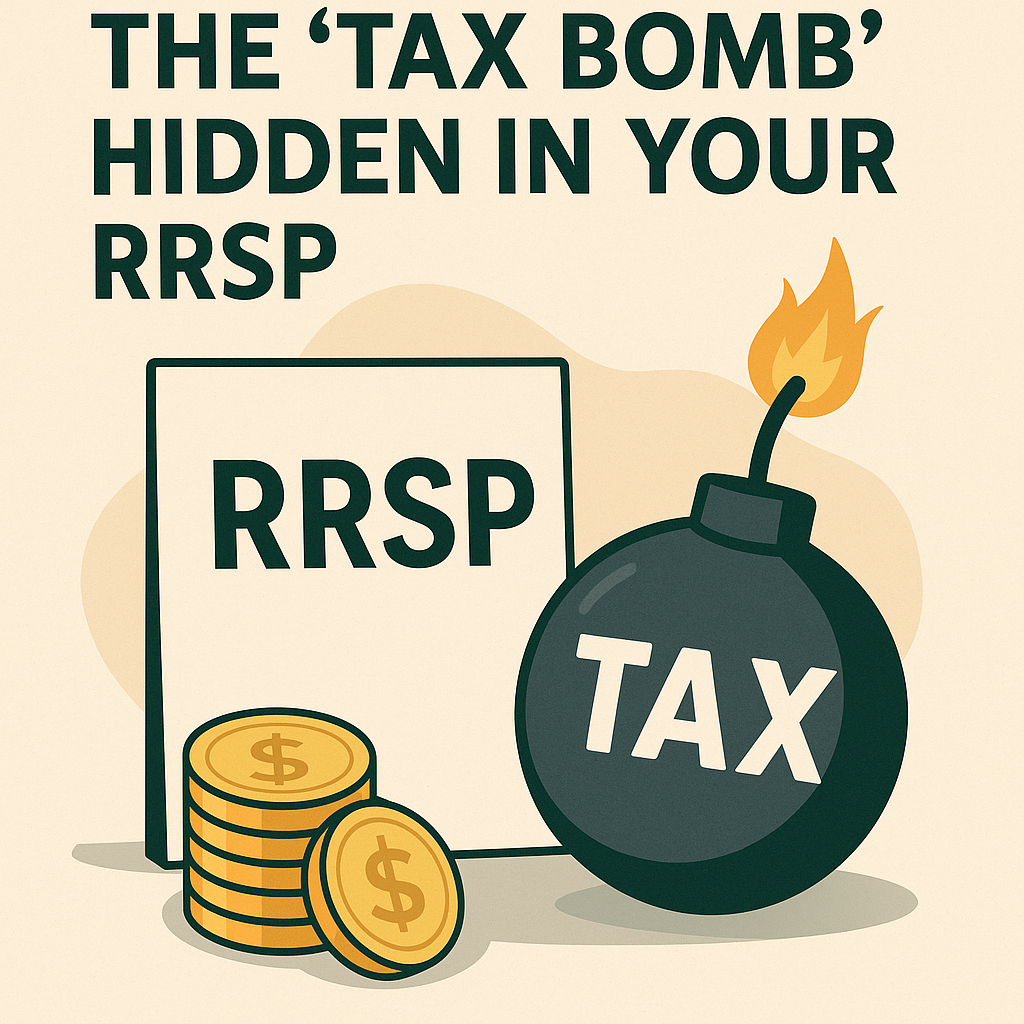The RRSP is one of Canada’s most popular retirement tools — and for good reason. Contributions reduce your taxable income today, and growth inside the plan is tax-deferred until you withdraw.
But many Canadians are surprised to learn that if not handled properly, RRSPs can actually lead to higher lifetime taxes than investing in a non-registered account.
Let’s unpack why that happens — and how to strategize your withdrawals to truly maximize the benefit.

Not All Retirement Income Is Taxed the Same
Here’s the part most people overlook:
- RRSP withdrawals are fully taxed as ordinary income. If you withdraw $50,000 from your RRSP in retirement, you report $50,000 as income — and pay tax at your marginal rate, just as you would on salary.
- Capital gains, by contrast, are only 50% taxable. That means only half the gain is added to your income, and the other half is tax-free.
- Eligible Canadian dividends benefit from a gross-up and dividend tax credit, which in many provinces results in significantly lower tax rates than ordinary income — and in some cases, near-zero tax for lower-income retirees.
So if you’re drawing $40,000 from your RRSP vs. generating the same amount from dividends and capital gains in an unregistered account, your after-tax income could be drastically different.
The “Tax Bomb” Hidden in Your RRSP
It’s not just about tax rates — it’s about timing and control. The more your RRSP grows, the more tax you’ll eventually owe. And after age 71, you don’t get to choose when to withdraw — the government decides, through RRIF minimum withdrawal rules.
These forced withdrawals can:
- Push you into a higher tax bracket
- Trigger clawbacks of benefits like Old Age Security (OAS)
- Leave your estate with a large tax liability if you pass away without a surviving spouse
Meanwhile, with an unregistered account, you control the timing and type of income — selling investments selectively, realizing capital gains over time, and receiving tax-preferred dividends.
It’s Not About RRSP vs. Unregistered — It’s About Strategy
Here’s the key: The RRSP is not the problem. The lack of strategy is.
To truly benefit from your RRSP, you need to think beyond contributions. That means planning:
- When to contribute (and when not to)
- When to start withdrawing, even if you don’t need the income yet
- How to coordinate withdrawals with other sources of income
- How to balance RRSPs with TFSAs and non-registered accounts
The goal isn’t just to save on taxes this year. It’s to minimize taxes over your entire lifetime.
And that’s where a well-crafted strategy comes in — one that’s tailored to your income level, assets, retirement timeline, and estate goals.
At Bison CPA LLP, we help clients look at the full picture — and build strategies that make the most of their RRSPs without stepping into unexpected tax traps.
Because in tax planning, the difference between “good” and “optimal” can be worth tens of thousands of dollars.
